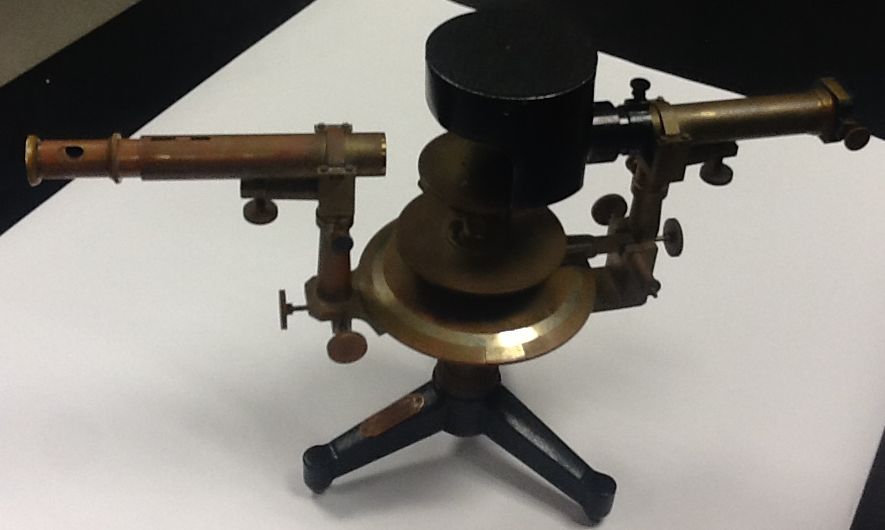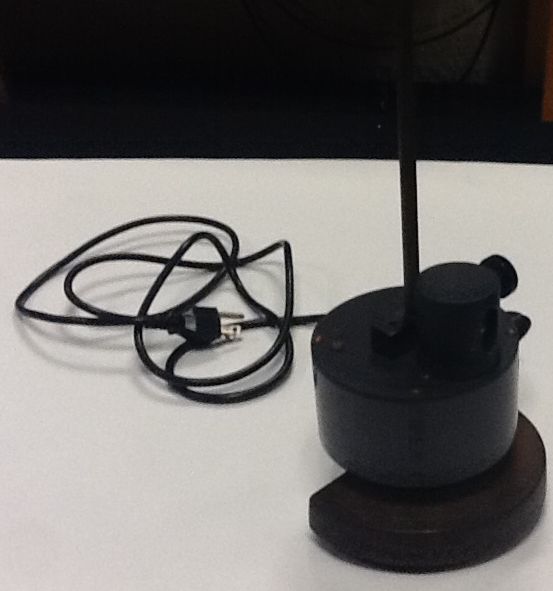Spectrometer
 Our beautiful antique spectrometers have many manual adjustments. Nothing is hidden from the user. There are two types of spectrometers, one made by the Spencer Lens Co. (black) and the other by the Geneva Society (brass, pictured). Both have the same accuracy and are used in essentially the same way; instructions here.
Our beautiful antique spectrometers have many manual adjustments. Nothing is hidden from the user. There are two types of spectrometers, one made by the Spencer Lens Co. (black) and the other by the Geneva Society (brass, pictured). Both have the same accuracy and are used in essentially the same way; instructions here.
Spectrometer with Cap
 A cap is provided for covering the sample stage and protecting it from stray light. The cap slides into grooves at the near end of the collimator tube. Some students find it easier not to use the cap. It is your choice.
A cap is provided for covering the sample stage and protecting it from stray light. The cap slides into grooves at the near end of the collimator tube. Some students find it easier not to use the cap. It is your choice.
Mercury Lamp

A mercury lamp provides the light that we will observe with the spectrometer. Because of its UV output, you should not stare at the lamp when it is on, except when looking through the layers of glass making up the optics of the spectrometer.
Prism

A prism will sit on the sample stage of the spectrometer and reflect or refract light from the collimator into the telescope, depending on how it is positioned. The prism is a wedge of optical quality glass with at least two faces polished. A “refracting edge” is an edge between two polished faces. If you have a prism with more than two polished faces, an appropriate edge should be marked.
Desk Lamps
 These lamps are used for lighting your work-spaces as needed. They should be off when you are looking through the telescope. Please try to keep them from interfering with the observations of other lab groups. They also can be used to illuminate the spectrometer vernier scales when making angle measurements.
These lamps are used for lighting your work-spaces as needed. They should be off when you are looking through the telescope. Please try to keep them from interfering with the observations of other lab groups. They also can be used to illuminate the spectrometer vernier scales when making angle measurements.
Converging Lenses
 Converging lenses are available for use as magnifying glasses for reading the vernier scales on the spectrometers.
Converging lenses are available for use as magnifying glasses for reading the vernier scales on the spectrometers.

